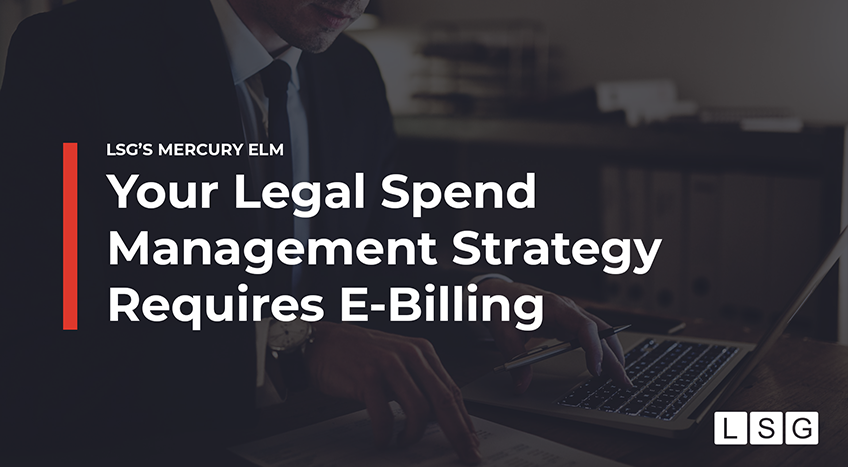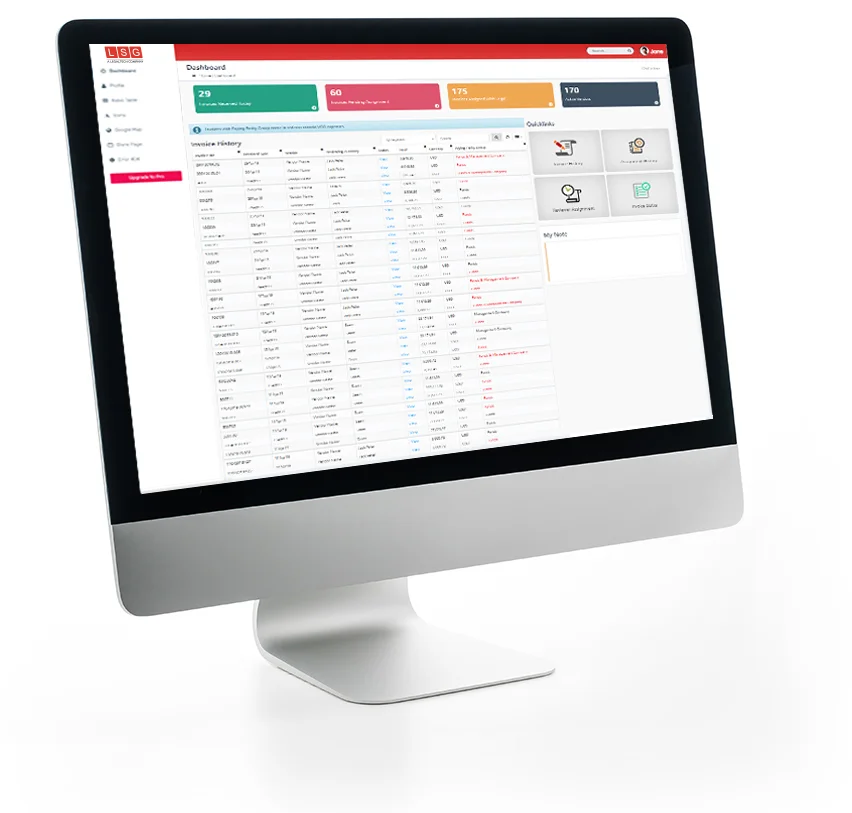Blog
Your Legal Spend Management Strategy Requires E-Billing
Published by Joakim Hjønnevåg on Nov 10, 2020

Implementing legal electronic billing - or “e-billing” - for tracking, reviewing and processing legal expenses can lead to large benefits. Corporate legal departments that have implemented e-billing and LEDES into their operations through robust legal spend management software are seeing dramatic improvements in reduced time waste and lowered legal spend on external panel counsel.
By shipping off panel counsel invoices to digital legal spend management platforms, LEDES and e-billing technology has made it extremely easy for enterprises such as insurance firms to automatically analyze and review their incoming legal spend for compliance to billing guidelines. Consequently, this has also reduced invoice aging and is increasing the speed at which panel law firms are getting paid.
When a panel law firm forwards a LEDES format invoice using a legal e-billing portal, often integrated into their client’s legal spend management software, the invoice is filtered through legal bill review technology to check for uniformity and compliance to billing guidelines. This, in effect, ensures that in-house counsel do not need to review legal invoices manually, making the process more efficient than ever before.
This is also leading to massive improvements in data analytics and reporting for corporate legal departments, providing real-time accurate overviews of legal spend across an organization with comprehensive details into the type of spend; spend by firm, counsel and beyond.
Maureen R. Dry-Wasson, Assistant General Counsel for Allegis Group, marvelled at how she can “quickly find out how much has been spent year-to-date on a matter with a law firm. There’s a lot of information at your fingertips that was never there before.”
Does legal e-billing get the monkey off the back?
One common facet in e-billing and legal spend management is the premise of best practices and billing guidelines. E-billing in LEDES is an ideal format for panel counsel to follow set guidelines, scoped out in the service level agreement with their clients. The guidelines can range from determining the charges for making copies or deciding on the number of daily billable hours per lawyer, as well as general rules ensuring that the correct level of lawyer is working on certain legal tasks. This ensures that enterprises don’t end up overpaying for legal services, e.g. by paying for a partner doing paralegal work, or for unauthorized photo copies.
If an invoice sent over by panel counsel does not fall within pre-determined billing guidelines, it can be flagged as non-compliant by a legal spend management system. This alerts in-house counsel, or an external team of legal fee auditors, to review and act upon the inconsistent invoice, for example reducing or removing the affected line item.
For in-house counsel, using legal spend management systems with e-billing and LEDES can “get the monkey off their back” as described by H. Ward Classen, Deputy General Counsel of Computer Science Corp. Classen noted the benefit of the invoices having “one set of eyes looking at it, even though they’re electronic eyes.”
Instead of manually jotting down billing data and codes on a spreadsheet, companies can use the data automatically gathered from legal e-billing to make comparisons and key business decisions. Classen found that with e-billing baked into a legal spend management software, his staff has been able to quickly sift through the fees of every panel counsel working with his company as opposed to manually reviewing boxes of hard copy legal invoices.
“Now we can see Firm A charges an hourly rate of $350 and Firm B charges a blended hourly rate of $400. Assuming everyone’s work is of the same quality, you can direct future litigations to those firms,” said Mr. Classen, detailing the usefulness of legal e-billing data.
Legal spend management and e-billing technology has gained a fair bit of traction among large companies. There is an estimated 60-70% of large companies incorporating legal e-billing into their technological infrastructure.
Legal e-billing is turning out to be very popular among in-house counsel as well. Daniel J. DiLucchio Jr, principal of Altman Weil Inc, explains the popularity: “That’s why lawyers love it [legal e-billing] – because when they used to get hard copy bills from outside counsel, honestly the last thing they wanted to do was go through those bills and process them for payment. Was it accurate, did it add up? Now they’re all done automatically and electronically.”
Is legal e-billing also beneficial for law firms?
In a study conducted by the Association of Corporate Counsel, it was found that legal e-billing amounts to less than 1% of yearly legal spend. Due to highly effective legal bill review and wider legal spend management systems, the companies that have adopted legal e-billing are saving approximately 22% annually in external legal spend. Increased savings can be observed in companies that process panel counsel invoices quickly and are subsequently also able to obtain discounts from law firms for making early payments.
For a law firm, the advantage of legal e-billing is fairly straightforward. Law firm invoices are being processed quicker due to legal e-billing portals baked into their clients’ legal spend management software. Classen also spoke to the advantages of legal e-billing for law firms:
“I think it’s very reasonable to expect you can be paid within 30 days of sending the bill, whereas in the past I think it wasn’t, because of the administrative process of sending out the bill, receiving it, putting it through the system and then getting paid.”
Using legal e-billing tools such as Bilr enables lawyers to submit LEDES invoices directly into their clients’ legal spend management system, rather than using their clients’ e-billing portals. At the same time, this solution also provides law firms with the opportunity to scan their bills for compliance to billing guidelines, similar to what their clients will do upon receipt.
In a nutshell, law firms can clean their invoices before sending it to clients to ensure compliance with client’s billing guidelines. E-billing tools such as Bilr are projected to increase law firms’ compliance and therefore revenues while providing mutual benefit to their clients in that legal bill review and processing is hastened and requires less work.
Conclusion
Most corporate legal departments concur that legal e-billing has drastically reduced the chaos of paper trails left by panel counsel. E-billing and subsequent legal spend management software has made it possible for enterprises to electronically receive and process invoices rather than being tied down by manually reviewing every incoming invoice.
In addition to fostering an atmosphere of trust between in-house counsel and panel counsel, legal spend management software with e-billing and LEDES enabled are saving a considerable amount of time and money for both parties.
The advent of legal e-billing has not only has added value through reducing cost for enterprises and law firms, but has also increased productivity by automating dreary repetitive operations and hence liberating both in-house and panel counsel to focus on more value-add tasks.



